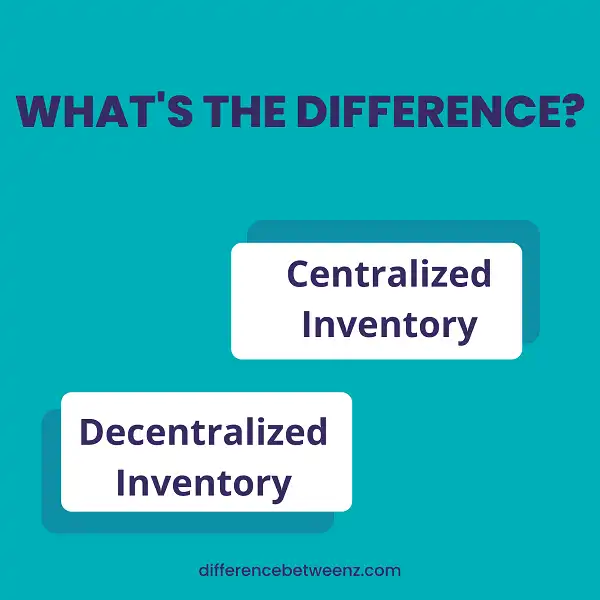Inventory management is an important part of any business. There are two main types of inventory systems: centralized and decentralized. Each system has its own advantages and disadvantages. Decentralized inventory management is becoming more popular because it offers several benefits over centralized systems.
What is Centralized Inventory?
Centralized inventory is a system in which inventory items are stored at a central location rather than at individual stores or locations. The centralized inventory system allows businesses to have better control over their inventory and to more easily track and manage stock levels. Having centralized inventory also helps to reduce the cost of inventory management and can improve customer service levels by ensuring that products are always available when needed. While there are some challenges associated with centralized inventory, such as the need for more coordination between different departments, the benefits of this system often outweigh the drawbacks.
What is Decentralized Inventory?
Decentralized inventory is a system where inventory is spread out across multiple locations rather than being concentrated in one central warehouse. This can have a number of advantages, including reduced shipping costs, shorter lead times, and increased flexibility. In many industries, decentralized inventory is the norm rather than the exception. For example, most retailers maintain decentralized inventory, with goods being shipped directly from suppliers to stores rather than being first routed to a central warehouse. The automotive industry is another sector where decentralized inventory is common, as parts are often shipped directly from suppliers to assembly plants.
Difference between Centralized Inventory and Decentralized Inventory
Businesses need inventory to keep products in stock for customers. There are two ways businesses can store inventory: centralized inventory and decentralized inventory. Centralized inventory is stored in one location, while decentralized inventory is spread out among multiple locations. Each method has its own benefits and drawbacks.
Centralized inventory is easier to manage because all of the inventory is in one place. This makes it simpler to track what needs to be restocked and to keep an accurate count of products. On the other hand, centralized inventory can be more expensive to maintain because it requires a larger space to store all of the product. In addition, if the central location is damaged or destroyed, the entire inventory may be lost.
Decentralized inventory, on the other hand, is more costly to manage because each location must keep track of its own inventory levels. It can also be more difficult to coordinate between different locations. However, decentralized inventory is less likely to be completely lost in the event of damage to one location, and it may be closer to customers, which can reduce shipping costs.
Ultimately, the decision of whether to use centralized or decentralized inventory depends on the specific needs of the business.
Conclusion
Centralized inventory systems are the traditional way of managing stock. However, over the last few years there has been a shift towards decentralized inventory management systems. There are several benefits to using decentralized inventory systems that businesses should consider when making the switch.
Decentralized inventory systems offer more flexibility and control, can be adapted to changing business needs, and are more efficient than centralized systems. If you are looking for a more efficient and flexible way to manage your stock, you should consider switching to a decentralized inventory system.


